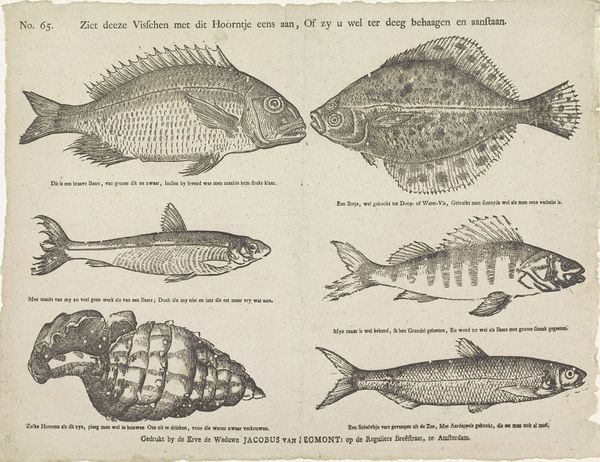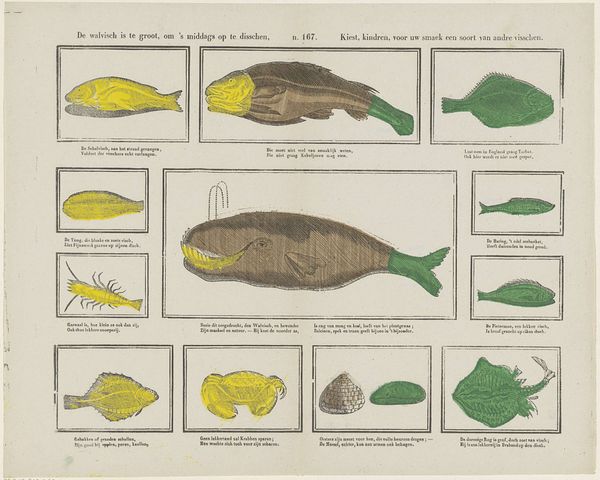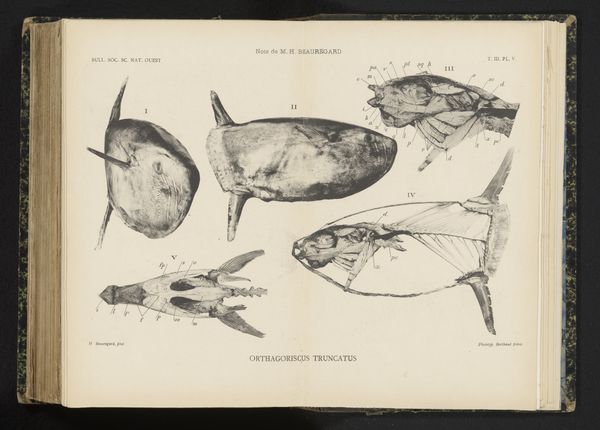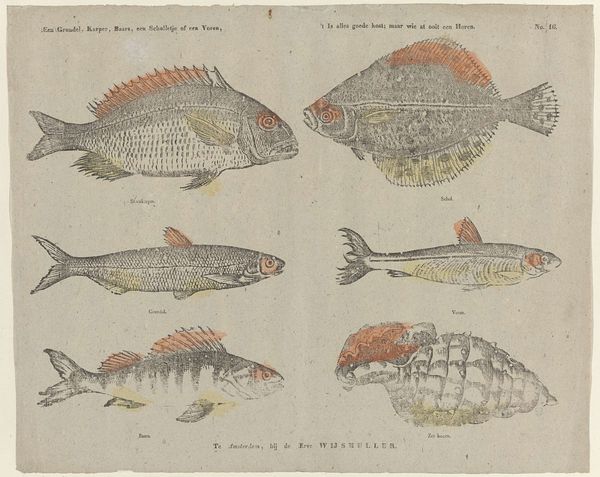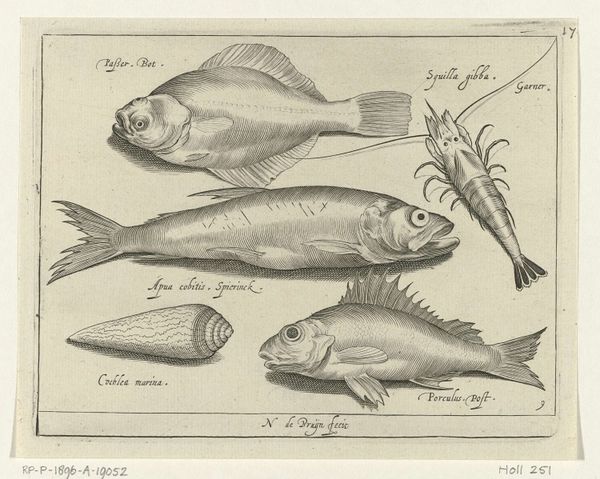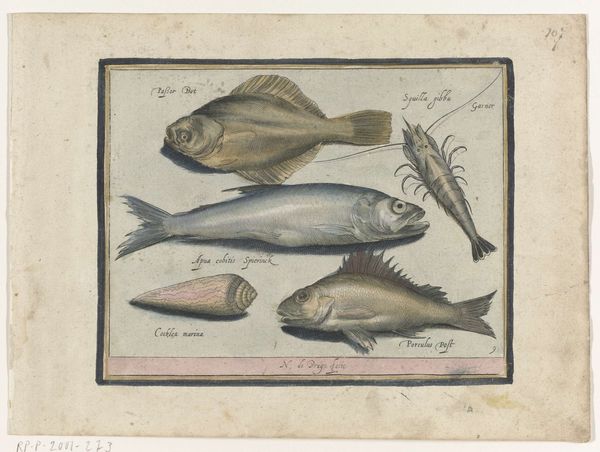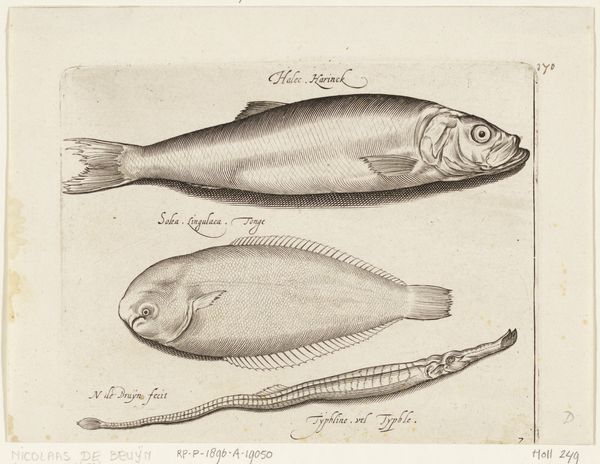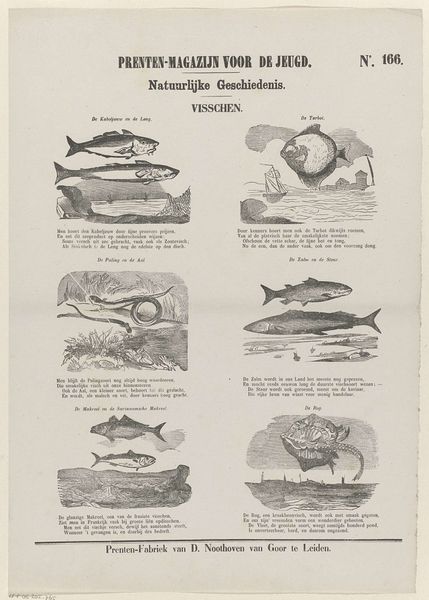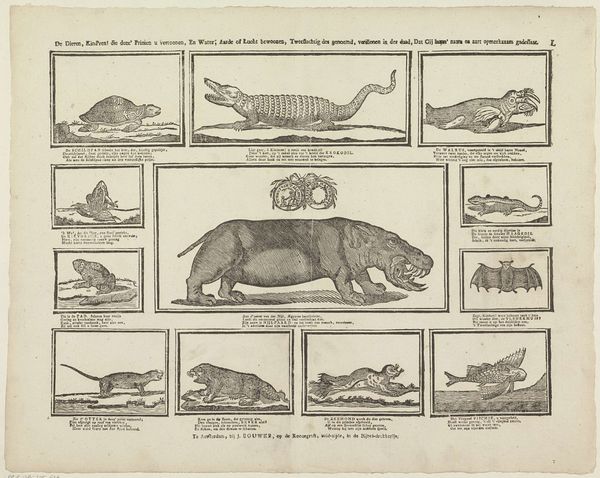
Ziet, kinders! op deez' print verscheidenheid van visch, Die ons de zee verschaft, meest smaaklijk op den disch 1805 - 1808
0:00
0:00
johannesbouwer
Rijksmuseum
graphic-art, print, engraving
#
graphic-art
# print
#
genre-painting
#
engraving
#
realism
Dimensions: height 325 mm, width 416 mm
Copyright: Rijks Museum: Open Domain
Curator: Ziet, kinders! op deez' print verscheidenheid van visch, Die ons de zee verschaft, meest smaaklijk op den disch, by Johannes Bouwer. Created between 1805 and 1808, and held at the Rijksmuseum. It's an engraving presenting various fish species, almost like a visual encyclopedia of seafood. It seems to be suggesting these fish are good for the table. What do you make of it? Editor: It's fascinating how matter-of-fact it is. No attempt to beautify, just a straight depiction of edible fish, paired with equally practical text. It's both educational and… appetizing, I suppose? Given that it is located at the Rijksmuseum, and based on your expert historical lens, I'm curious: does the setting where it's displayed alter how people view this artwork? Curator: Absolutely. Displaying it in the Rijksmuseum elevates what would have been functional print media into art. The choice says much about evolving social views and the increasing significance of public education. Does framing 'common' things in a cultural context change their perception, do you think? Editor: That's a good question! The Rijksmuseum might signal legitimacy to some people; and those people would now pause and engage with this "ordinary" piece. Perhaps someone who usually only sees these fish as ingredients might begin to wonder about ecology and biodiversity? Curator: Exactly. Art's power lies in its role in reframing views. But it's worth asking, does the elevated context enhance or does it unintentionally strip the image of its original cultural and practical function? Editor: That's something to think about as well. The piece encourages us to question its place both in art history, and food history! Curator: Agreed. A great learning opportunity for all of us, about the intersection of society, food, and art.
Comments
No comments
Be the first to comment and join the conversation on the ultimate creative platform.



